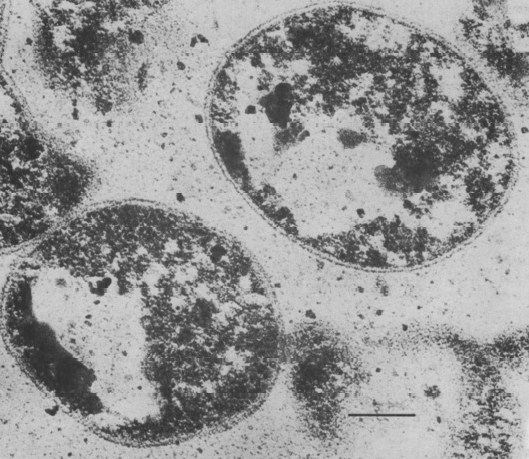Metallosphaera sedula
Classification
Domain: Archaea
Phylum: Crenarchaeota
Class: Thermoprotei
Order: Sulfolobales
Family: Sulfolobaceae
Genus: Metallosphaera
Species
|
NCBI: Taxonomy |
Metallosphaera sedula
Description and Significance
Originally isolated from a volcanic field in Italy, Metallosphaera sedula can be roughly translated into “metal mobilizing sphere” with the word “sedulus” meaning busy, describing its efficiency in mobilizing metals. M. sedula is a highly thermoacidophilic Achaean that is unusually tolerant of heavy metals(1).
Due it its ability to ability to oxidize pyrite (FeS2), M. sedula has the potential to be used for coal depyritization (3). With increased awareness of the environmental impact of the combustion of coals, the idea of “clean coal” was born. While there are several focuses of “clean coal”, one of which is the removal of impurities, such as sulfur found in pyrite, prior to combustion. The combustion of sulfur leads to the formation of SO2, which has adverse health effects, and contributes to acid rain (4,5).
Abiotic removal of pyrite from coal is currently the preferred method, as opposed to biotic extraction via microorganisms; however, the process is feasible. Other organisms have been studied for the purpose of coal depyritization (for example, Thiobacillus ferroxidans), however the process occurs at a slower rate than traditional abiotic removal. (6) M. sedula, being thermophilic, is tolerant of higher temperatures which result in faster extraction rates than other organisms, and a strong candidate for future use in coal depyritization (3,6).
Genome Structure
Describe the size and content of the genome. How many chromosomes? Circular or linear? Other interesting features? What is known about its sequence?
Cell Structure, Metabolism and Life Cycle
Interesting features of cell structure; how it gains energy; what important molecules it produces.
Ecology and Pathogenesis
Habitat; symbiosis; biogeochemical significance; contributions to environment.
If relevant, how does this organism cause disease? Human, animal, plant hosts? Virulence factors, as well as patient symptoms.
References
1. Huber, G. ,Spinnler, C. , Gambacorta , A., and Stetter, K. “Metallosphaera sedula gen. and sp. nov. Represents a New Genus of Aerobic, Metal-Mobilizing, Thermoacidophilic Archaebacteria”. Systematic and Applied Microbiology. 1989. p. 38-47.
2. Auernik, K., and Kelly, R. “Physiological Versatility of the Extremely Thermoacidophilic Archaeon Metallosphaera sedula Supported by Transcriptomic Analysis of Heterotrophic, Autotrophic, and Mixotrophic Growth”. Applied and Environmental Microbiology. 2010. p. 931-935.
3. Clark, T., Baldi, F., And Olson, G. “Coal Depyritization by the Thermophilic Archaeon Metallosphaera sedula”. Applied and Environmental Microbiology. 1993. p. 2375-2379.
4. http://www.epa.gov/oaqps001/sulfurdioxide/
5. http://www.epa.gov/acidrain/what/index.html
6. Peeples, T.L., and Kelly, R.M., “Bioenergetics of the metal/sulfur-oxidizingextreme thermoacidophile, Metallosphaera sedula”. Fuel. 1993. p. 1577-1752.
Author
Page authored by Stephanie Napieralski and Caitlin Miller, students of Prof. Jay Lennon at Michigan State University.
<-- Do not remove this line-->

